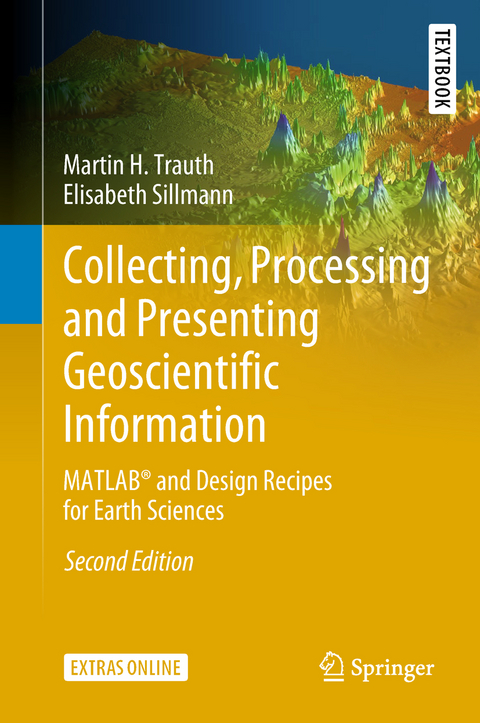
Collecting, Processing and Presenting Geoscientific Information
Springer Berlin (Verlag)
978-3-662-56202-4 (ISBN)
This second edition is an intensively revised and updated version of the book MATLAB® and Design Recipes for Earth Sciences . It aims to introduce students to the typical course followed by a data analysis project in earth sciences. A project usually involves searching relevant literature, reviewing and ranking published books and journal articles, extracting relevant information from the literature in the form of text, data, or graphs, searching and processing the relevant original data using MATLAB, and compiling and presenting the results as posters, abstracts, and oral presentations using graphics design software. The text of this book includes numerous examples on the use of internet resources, on the visualization of data with MATLAB, and on preparing scientific presentations. As with the book MATLAB Recipes for Earth Sciences-4rd Edition (2015), which demonstrates the use of statistical and numerical methods on earth science data, this book uses state-of-the art software packages, including MATLAB and the Adobe Creative Suite, to process and present geoscientific information collected during the course of an earth science project. The book's supplementary electronic material (available online through the publisher's website) includes color versions of all figures, recipes with all the MATLAB commands featured in the book, the example data, exported MATLAB graphics, and screenshots of the most important steps involved in processing the graphics.
Martin H. Trauth was born in Landau in der Pfalz in 1963 and studied geophysics and geology at the University of Karlsruhe. He obtained a doctoral degree from the University of Kiel in 1995 and then became a permanent member of the scientific staff at the University of Potsdam. Following his habilitation in 2003 he became a lecturer, and then in 2011 an adjunct professor, at the University of Potsdam. Since 1990 he has worked on various aspects of historical changes in the climates of East Africa and South America. His projects have aimed to understand the role of the tropics in terminating ice ages, the relationship between climatic changes and human evolution, and the influence that climate anomalies had on mass movements in the Central Andes. Each of these projects has involved the use of MATLAB to apply numerical and statistical methods (such as timeseries analysis and signal processing) to paleoclimate time series, lake-balance modeling, stochastic modeling of bioturbation, age-depth modeling of sedimentary sequences, or the processing of satellite and microscope images. Martin H. Trauth has been teaching a variety of courses on data analysis in earth sciences for more twenty years, both at the University of Potsdam and at other universities around the world.
Scientific Information in Earth Sciences.- Searching and Reviewing Scientific Literature.- Internet Resources for Earth Science Data.- MATLAB as a Visualization Tool.- Visualizing Two-Dimensional Earth Science Data.- Visualizing Three-Dimensional Earth Science Data.- Processing and Displaying Images in Earth Sciences.- Editing Graphics, Text, and Tables.- Creating Conference Presentations.- Creating Conference Posters.- Creating Manuscripts, Flyers, and Books.
| Erscheinungsdatum | 27.04.2018 |
|---|---|
| Reihe/Serie | Springer Textbooks in Earth Sciences, Geography and Environment |
| Zusatzinfo | XIII, 274 p. 53 illus., 48 illus. in color. |
| Verlagsort | Berlin |
| Sprache | englisch |
| Maße | 155 x 235 mm |
| Gewicht | 596 g |
| Themenwelt | Naturwissenschaften ► Geowissenschaften ► Geologie |
| Schlagworte | Data Visualization • earth science informatics • MATLAB scripts • oral presentations • scientific information processing • scientific presentations • Scientific Writing |
| ISBN-10 | 3-662-56202-2 / 3662562022 |
| ISBN-13 | 978-3-662-56202-4 / 9783662562024 |
| Zustand | Neuware |
| Informationen gemäß Produktsicherheitsverordnung (GPSR) | |
| Haben Sie eine Frage zum Produkt? |
aus dem Bereich


